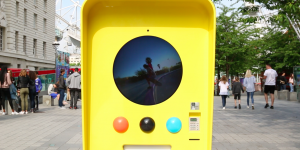The internet is no longer a singular space, it is a place that centres around each user. The online world revolves around choice; catch up TV, options to save videos, swiping and ad blockers mean that users have the choice to look at what they want, when they want.
When The Guinness Book of Records first emerged, it was a great piece of content marketing for the beer brand, something innovative and different that people could get involved in. However, the online world has changed the game. The pace of social media means expectation is high and impression time is limited; it’s no longer ok to shout at people in order to get your point across – to grab someone’s attention you have to be engaging, otherwise they will simply click onto something else.
Diving into content using the internet
Approximately 22% of UK internet users block ads. This statement highlights a very important point – we should not be worrying about the statistic, but worrying about the fact we have created a society where users will download foreign software onto their computers in order to block the what companies are trying to tell them.
Interestingly, they are blocking the ads in order to get to the content – we know they want the content, so what can we possibly be doing wrong?
Social monopoly
Weetabix and Coca-Cola are brands that shift an extortionate amount of product. The former selling 60m units per week and 1.8bn serves of the soft drink being sold every day. Yet, the Weetabix Instagram post below gathered 187 likes, while Coca-Cola’s last three tweets collected 1,000 likes combined.

The numbers simply do not add up.
5% of all content online generates 95% of all engagement online. That is an enormous bias which proves it's easier to get better at creating content and become one of the 5%, than it is to compete with the masses for the leftover 5%.
Brands that are winning online are consumer centric. What does customer centric mean? It means you entertain your audience, not advertise to them.
Allow people to talk about themselves
If we were to write a profile for humankind, our interest would be that we love to talk about ourselves. How do I know this? Let’s use Google Earth as an example. When this incredible piece of software came out, a platform that had taken images of every corner of the earth to allow us to travel and explore any location in the world through a digital experience, where did we all go? We went to our house – the same house on the same street that we see every day of the week. People love to talk about themselves; use this knowledge to draw in interest.
Make people feel a part of something
In the frustrating stretch of a tube strike, we created The F*cking Tube Strike, which went viral because it allowed commuters to see other people going through the same thing as them. Allow everyone to be in on the joke.
Google's Paper Planes allows people to feel part of something bigger than themselves; are you really going to be the guy that will not throw it on? Create something bigger than the everyday that will involve digital contact. People will engage with it.
Be new and surprise people
Novelty promotes memory. We are hard-wired on a biological level to look for something new, and even small changes to the mundane will stimulate our interest.

Honda’s day vs night campaign is a marvellous example of how this can be achieved. The advert itself is nothing new – it is the same as any car campaign – but they gave it a twist. The interactive advert allowed the watcher to switch between the daytime and night time version of events. This small difference in approach gives an element of surprise and creates interaction between the brand and audience.
Pop Chips took this game to the Twittersphere when it created #popmylunch, providing an entertaining service where users could send in images of their lunch, which would then be transformed into a piece of art. This short lived entertainment gave people a real-time interaction that they could be a part of. It was surprising and new, and therefore stimulated excitement.
Online is all about options. When someone chooses to engage with your content, you can be sure they will remember it and share it – so make sure to be part the 5% that get it right.
Diving into content with TV
While we may believe the advantage of immediate online results and an entire web that can be manipulated at our call means the TV sits in the corner collecting dust while our laptop does all the shift-work, this concept is entirely misconstrued.
As a matter of fact, despite the flexibility of the internet, live TV still accounts for an incredible 75% of average video time per day.

And 95% of all video advertising time per day.

People are missing out on these views by taking their branded content elsewhere. If you want to get you branded content in front of people – get it on TV.
There are two elements to consider with branded content: How do you make it good, and how do I make people see it? Both are vitally important and loses its value without the other. This content must entertain and generate interest, but it also required to be editorially justified.
Marketers need to remember that TV isn't on just on the television set, it is also online, and there are many ways to utilise it.
Get it on demand
Video on demand is a great place to display your branded content because if people want to access the programme then they have to watch the advert. Hotels.com made brilliant use of this feature using a ‘skip ad’ pun. People didn’t choose to watch the advert but it was successful because the content was engaging and entertained the user by predicting their behaviour. Grab people’s attention by turning frustration into something fun.
Make a game that comes on an app
During the rugby world cup Specsavers created Kick It, an app which allowed users to ‘flick to kick’ the penalties and conversions from the same place as the game, in real time. Involving consumers in a relevant game brings atmosphere to the brand and wears down the wall between company and customer. Make your branded content exciting by livening up an event with your own game.
Content within programming
A great example of innovating within a sponsorship comes from C4 and Fosters; Fosters, the main sponsor of comedy on Channel 4 wanted to extend their partnership into co-commissioned content that captured the spirit of the brand, so they brought Trigger Happy back to the nation as an All 4 exclusive series of eight five minute originals, with great content that worked across multiple platforms including YouTube and Facebook.
Another great case saw ITV work closely with Mattel to promote Scrabble within the reality TV diamond I’m a Celebrity Get Me Outa Here. Due to the high volume of shared family viewing this show was perfect for the brand and this was the first time PP had ever been included within the programme’s history.

Scrabble was integrated seamlessly into the show through a celebrity Scrabble challenge. The game had been needing to regain its mojo against a younger audience and this was the perfect way of bringing it to life in the run up to Christmas.
Content within ad breaks
If you want to make an impression within an ad break, then get someone really good to sponsor it for you. Suzuki did this brilliantly when it released a series of prank adverts involving Ant and Dec. Their licensing deal with the duo's live show means they can utilise Ant and Dec in various ways; it’s innovative because it takes elements of the show and translates them into usable bits of content for the brand. They sold out of that model simply from the exposure of that one piece of brilliant branded content.
Keep people engaged by offering a result they are part of. An example of this innovation comes from Universal Music, when they wanted to create impact for the launch of Years & Years’ debut album. They took over the whole break with a live ad that could be directed by Twitter users; viewers voted throughout the three and a half minute ad break via Twitter to switch between three different music videos by using the hashtags #ChooseDark #ChooseLight or #ChooseShadow that correspond to the style of each music video.

Every 30 seconds, the video switched to show the most popular video. A selection of twitter handles were shown at the top of the screen by way of thank you to the people who got involved; this is a brilliant technique of making branded content interesting.
The average TV advert is seen by 238 million viewers – that's how you get branded content in front of people.
This article was written by Michael Scantleury, founder and creative director of Impero, and Lindsey Clay, CEO of Thinkbox.





















